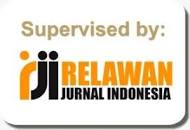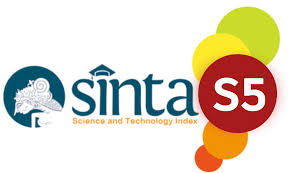Author Guidelines
Author Guidelines
Every manuscript submitted for publication in AIJES Journal will be checked for plagiarism using Turnitin software. If the editors or peer reviewers detect plagiarism, the author/s will be informed and requested to rewrite the text or provide any necessary citations. The manuscript will not be eligible for review and publication if the Turnitin report results is more than 25% of the similarity index.
If you have any questions, please contact the editorial assistant at: aijes@stkipddipinrang.ac.id
AIJES Author Guidelines:
Authors must strictly follow the submission guidelines of the journal. To submissions that do not adhere to the guidelines provided, they will be REJECTED. Please submit your article through the online submission of this journal by registering and account and login to the system.
AIJES only publishes articles written in English or Indonesian. British or American spelling is acceptable but must be consistent throughout. All non-English words in the manuscript must be italicized. We recommend professional proofreading for non-native speaker authors.
Manuscript Format
All articles must be written in English or Indonesian and should have an abstract between 200 to 250 words in length, followed by three to five keywords related to your article. Submissions should be between 5000-8000 (including abstract, table(s), figure(s) and references) in A4 size paper with margins as the following: top 3 cm, bottom 2.5 cm, right 2.5 cm and left 3.5 cm. (see our template)
Manuscript Structure
Title: The title should summarize the main idea or ideas of your paper; the title should be within 15 words maximum with Times New Roman 14-point font
Author(s) and Corresponding author information: This page should contain the full title of your paper not exceeding 25 words, with name(s) of all the authors, institutions and corresponding author's name, institution and full address (Street address, telephone number (including extension), handphone number, and e-mail address) for editorial correspondence. First and corresponding authors must be clearly indicated.
Abstract: This page should repeat the full title of your paper with only the Abstract (the abstract should be less than 250 words for a Regular Paper and up to 100 words for a Short Communication). A good abstract summarizes the complete report content, including at least one sentence per section: purpose, technical approach, results, and conclusion.
Keywords: Not more than eight keywords in alphabetical order must be provided to describe the contents of the manuscript and separated by ,
Introduction: state your work’s objectives and provide an adequate background, avoiding a detailed literature survey or a summary of the results. Explicitly state the literature gap, which signifies your research’s significance. In published journal articles, there are at least two citations required in the introduction that support the need for your research and experiments, or show upon which theories your experiment relies.
Research Method: The methods describe how the study was conducted; Include sufficient details for the work to be repeated. The methods section describes actions to be taken to investigate a research problem and the rationale for the application of specific procedures or techniques used to identify, select, process, and analyze information applied to understanding the problem, thereby, allowing the reader to critically evaluate a study’s overall validity and reliability. The method section of a research paper answers two main questions: How was the data collected or generated? And, how was it analyzed? The writing should be direct and precise and always written in the past tense.
Findings and Discussion: This section reports what was found in the study; The results section should state the findings of the research arranged in a logical sequence without bias or interpretation. A section describing results is particularly necessary if your paper includes data generated from your own research.
The discussion section explains meaning and significance of the results and provides suggestions for future directions of research. The purpose of the discussion is to interpret and describe the significance of your findings in light of what was already known about the research problem being investigated, and to explain any new understanding or insights about the problem after you've taken the findings into consideration. The discussion will always connect to the introduction by way of the research questions or hypotheses you posed and the literature you reviewed, but it does not simply repeat or rearrange the introduction; the discussion should always explain how your study has moved the reader's understanding of the research problem forward from where you left them at the end of the introduction.
Conclusion: A conclusion is not merely a summary of the main topics covered or a re-statement of your research problem, but a synthesis of key points and, if applicable, where you recommend new areas for future research. For most essays, one well-developed paragraph is sufficient for a conclusion, although in some cases, a two or three paragraph conclusion may be required.
Acknowledgments (optional): give credit to funding bodies and departments that have been of help during the project, for instance, by supporting it financially.
References: the references begin on their own page and are listed in alphabetical order by the first author's last name. Only references cited within the text should be included. Ensure that in-text (Citation) references are quoted as the APA 7th edition in-text citation style. All references should be in 12-point font and double-spaced using Reference Manager Tools like Mendeley, Zotero, or alike.
Article Selection and Publication Process
1) Upon receipt of article submission, the journal's system sends an email of confirmation to the corresponding author. If you fail to receive this confirmation, your submission/email may be missed. The author should pay no submission charge at this stage.
2) Initial Screening. Submitted articles will first go through the initial screening process by the editors. Articles that pass this process will be sent to two reviewers, and those that do not pass the process will be archived/rejected. This process takes 3 weeks to 1 month.
3) Peer review. We use a double-blind system for peer review; both reviewers’ and authors’ identities remain anonymous. The article will be peer-reviewed by two reviewers. The review process may take 3-6 months.
4) Notification of the result of review is by e-mail.
5) The authors revise the paper according to the feedback and suggestions by reviewers. Upon acceptance, a publication fee is to be paid by the author to the journal. The publication fee is accessible at our Journal page (PUBLICATION FEE)
6) After publication, the corresponding author will receive an email of notification on the e-journal in PDF that is available on the journal’s webpage and free of charge for download.
7) It normally takes about 7 months to 1,5 years from submission to publication, with an average of 9 months.






















